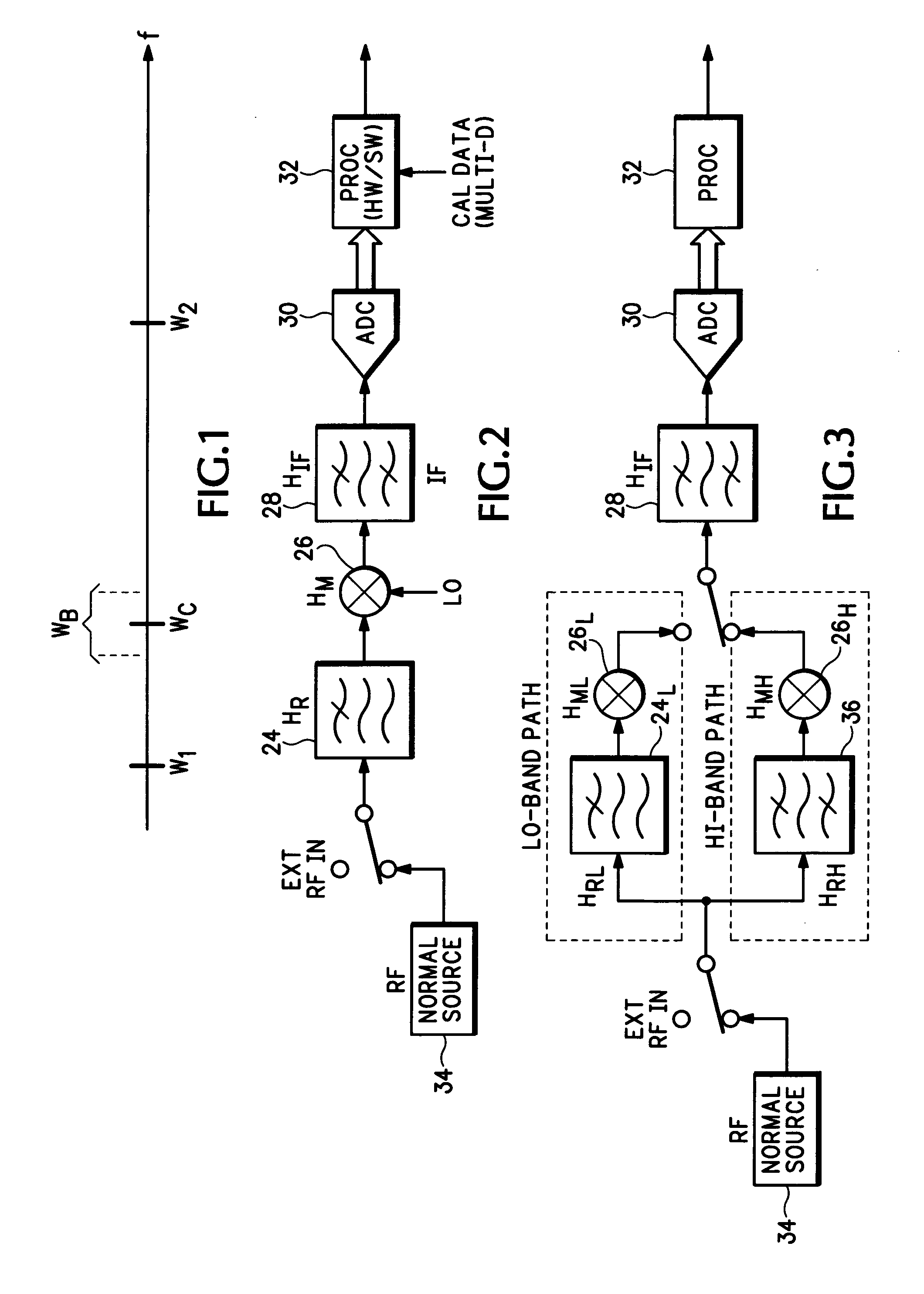Frequency response correction for a receiver having a frequency translation device
a frequency response and frequency translation technology, applied in the field of rf receivers, can solve problems such as leakage or feed-through between mixer ports, inter-modulation distortion, and variable frequency response across the if bandwidth
- Summary
- Abstract
- Description
- Claims
- Application Information
AI Technical Summary
Problems solved by technology
Method used
Image
Examples
Embodiment Construction
[0012]For the following discussion “calibration” refers to the factory calibration of an RF receiver using external test equipment, and “normalization” or “alignment” refers to RF receiver self-calibration using an internal reference test signal.
[0013]Referring now to FIG. 1 a typical RF system has multiple channels over a wide frequency range, each channel having a unique center frequency, ωc, and a specified channel bandwidth, ωb. The RF system covers a frequency range from a start center frequency, ω1, to a stop center frequency, ω2. A channel frequency response for the RF receiver is modeled as a two-dimensional function of center frequency and offset frequency as follows:
H(ω, ωc)=HR(ω+ωc)HM(ω, ωc)HIF(ω)
where H is the overall channel frequency response, HR is the RF frequency response preceding a mixer, HM is the RF mixer frequency response, HIF is the combined IF frequency response following the mixer and ω is the frequency offset from the channel center frequency, ωc. The freq...
PUM
 Login to View More
Login to View More Abstract
Description
Claims
Application Information
 Login to View More
Login to View More - R&D
- Intellectual Property
- Life Sciences
- Materials
- Tech Scout
- Unparalleled Data Quality
- Higher Quality Content
- 60% Fewer Hallucinations
Browse by: Latest US Patents, China's latest patents, Technical Efficacy Thesaurus, Application Domain, Technology Topic, Popular Technical Reports.
© 2025 PatSnap. All rights reserved.Legal|Privacy policy|Modern Slavery Act Transparency Statement|Sitemap|About US| Contact US: help@patsnap.com


